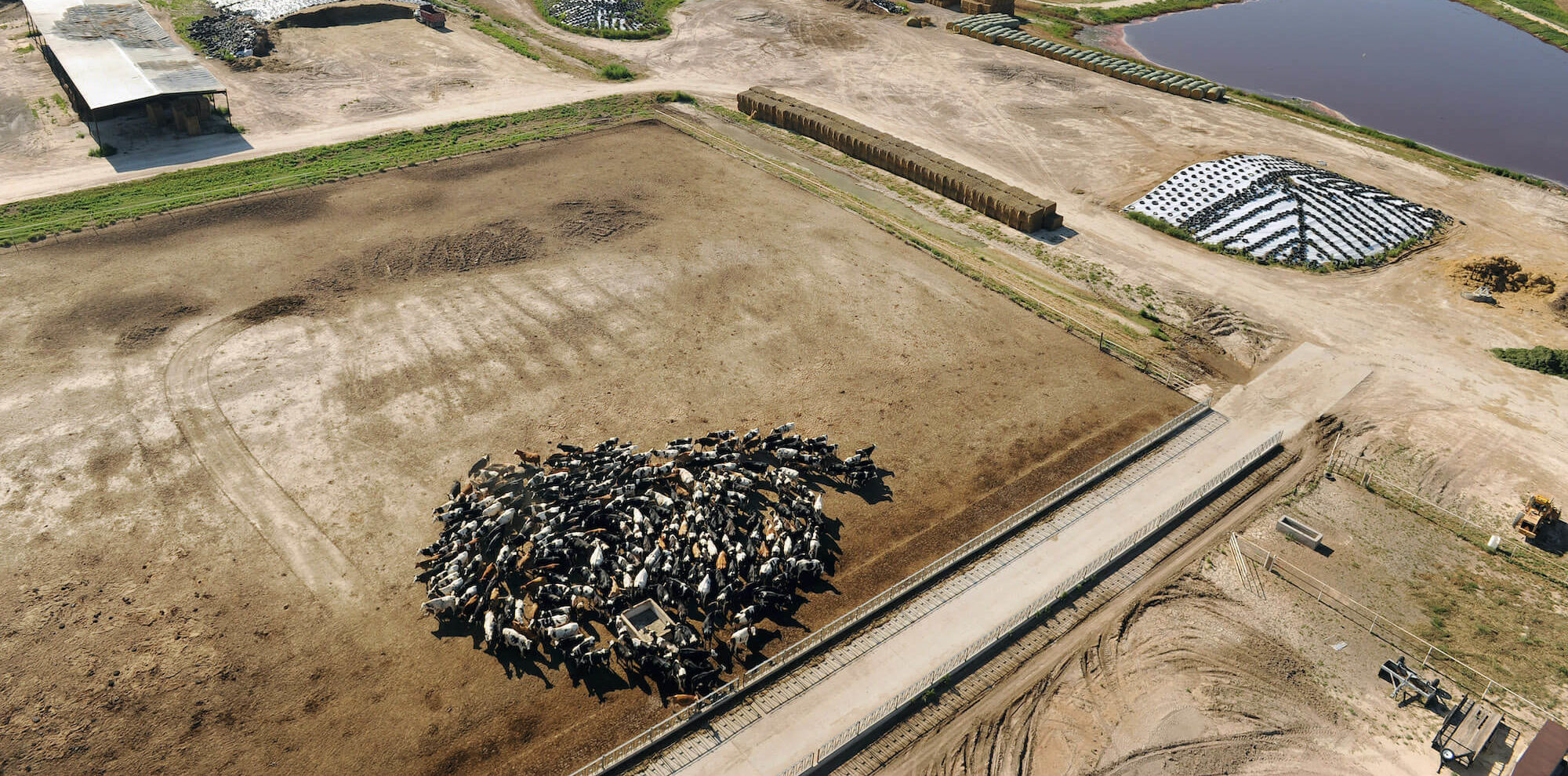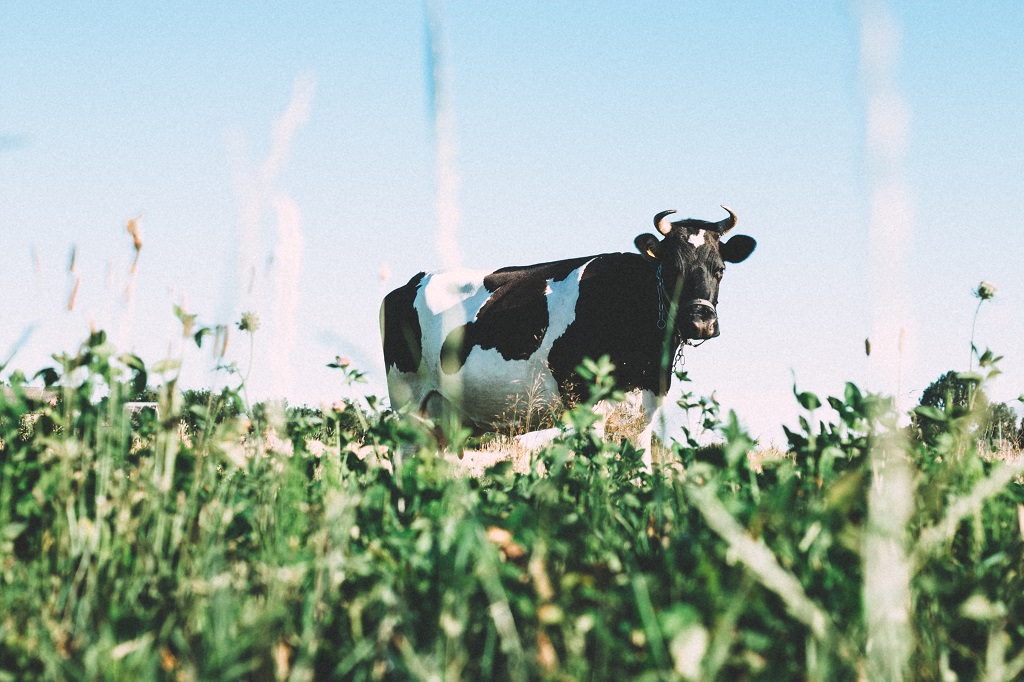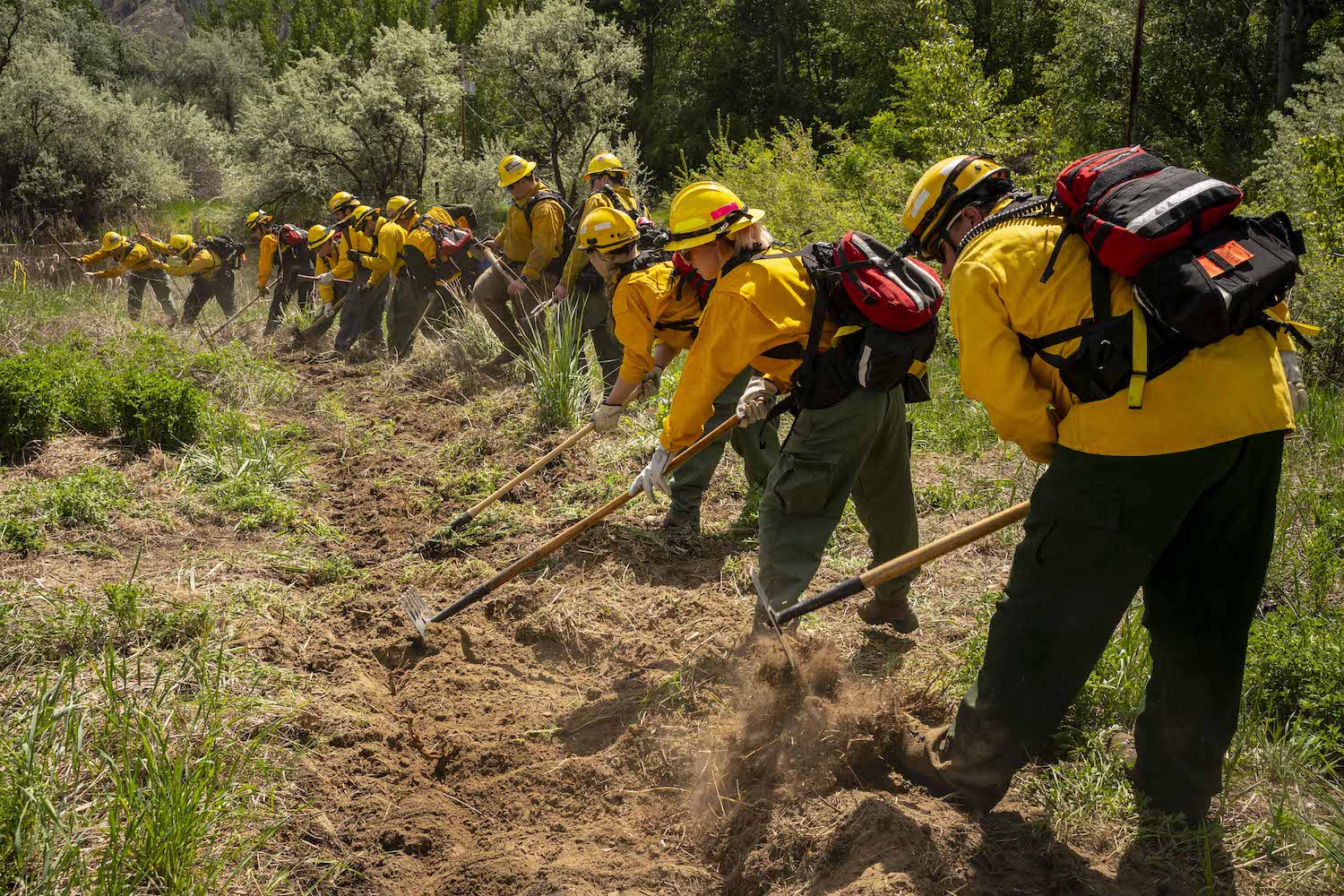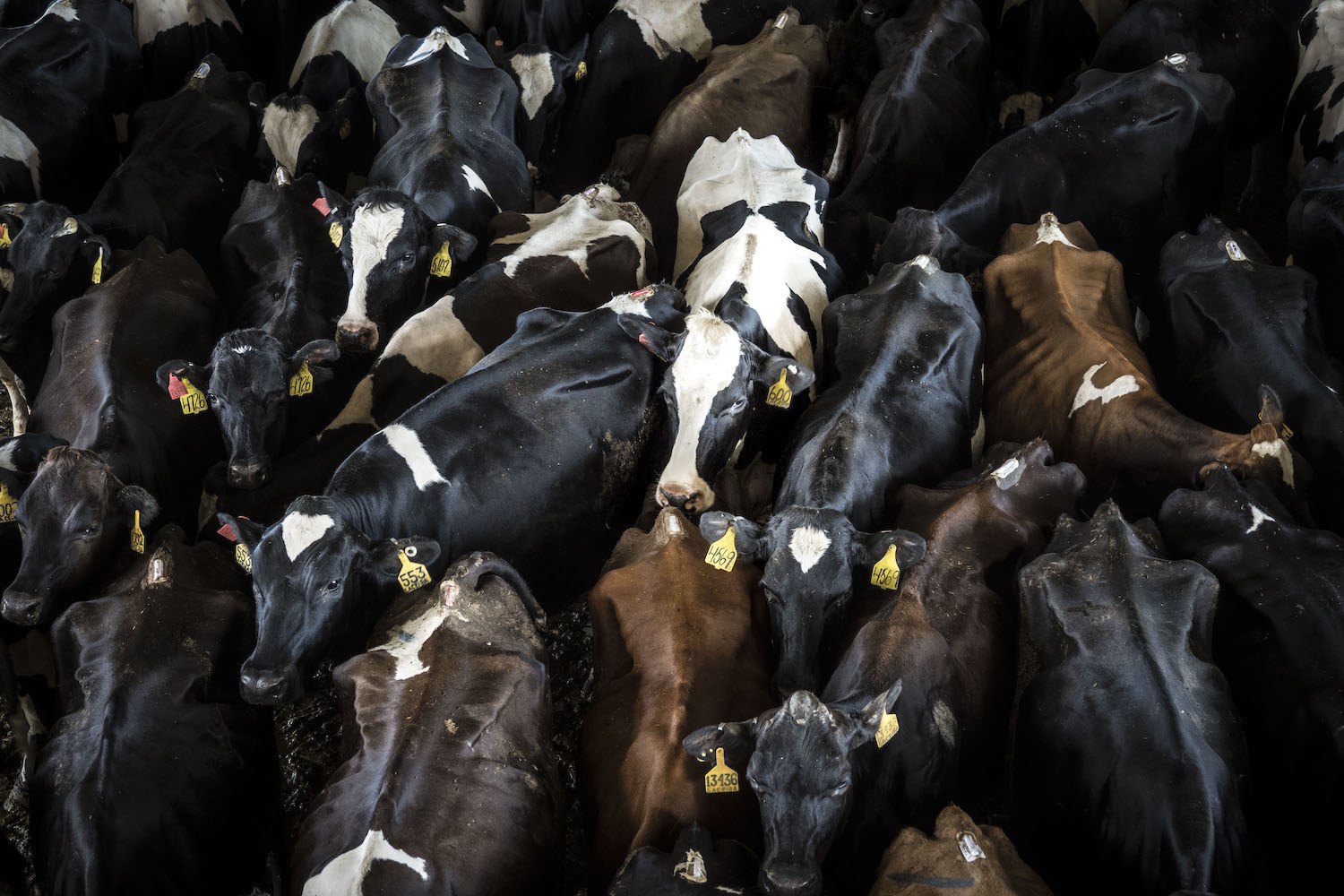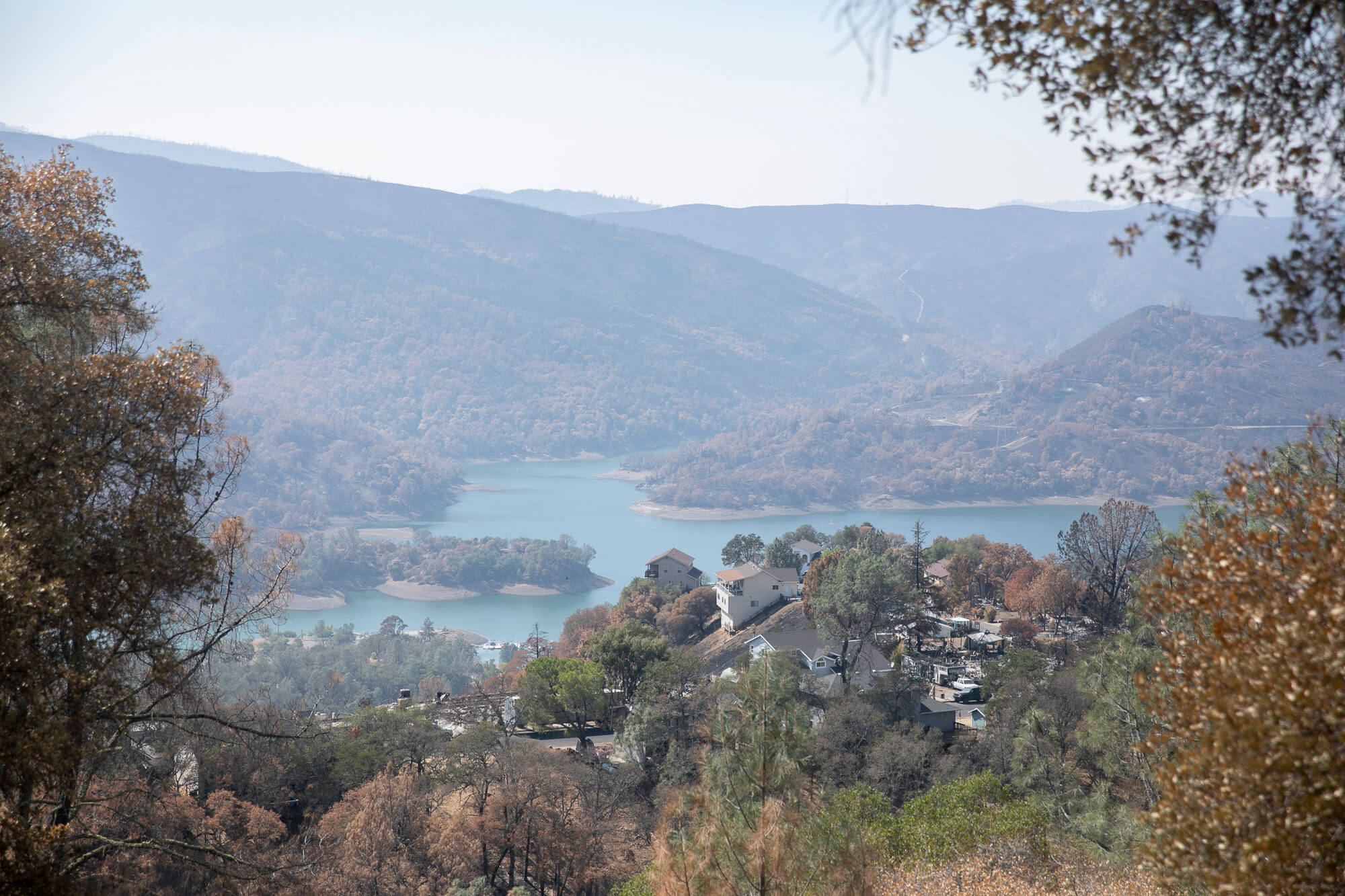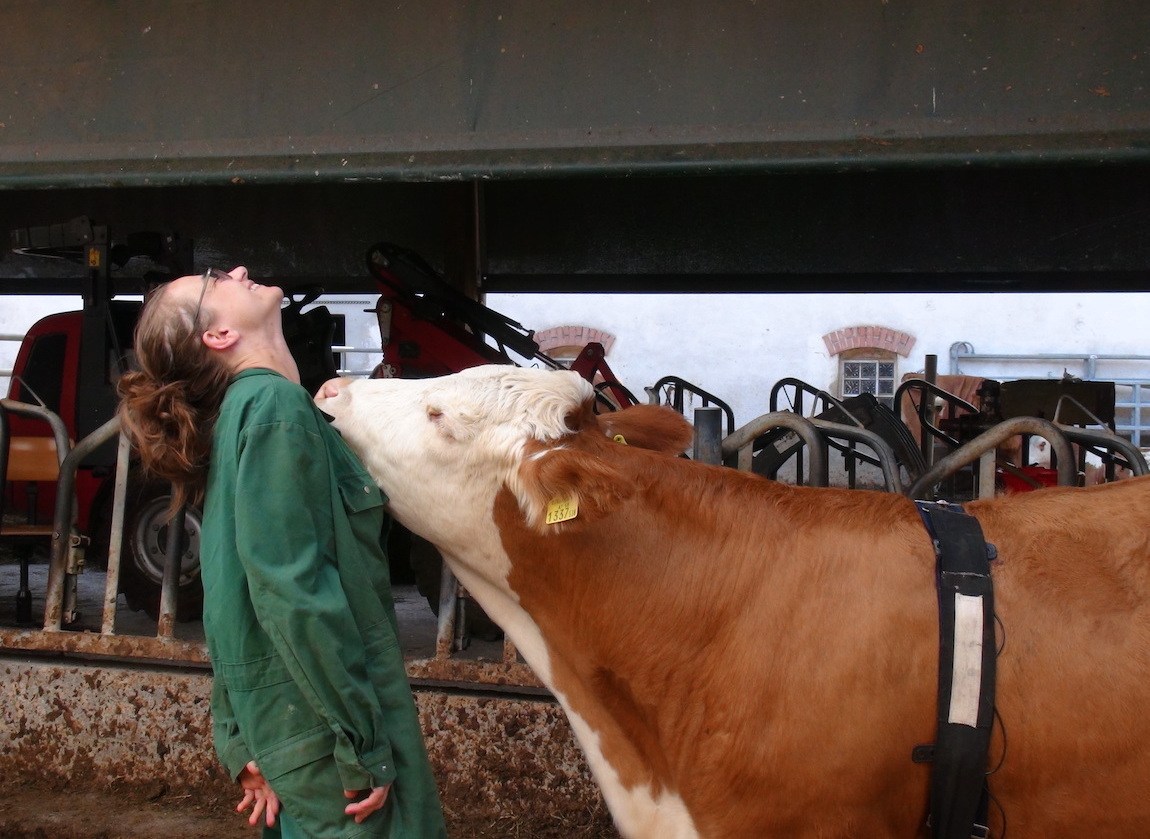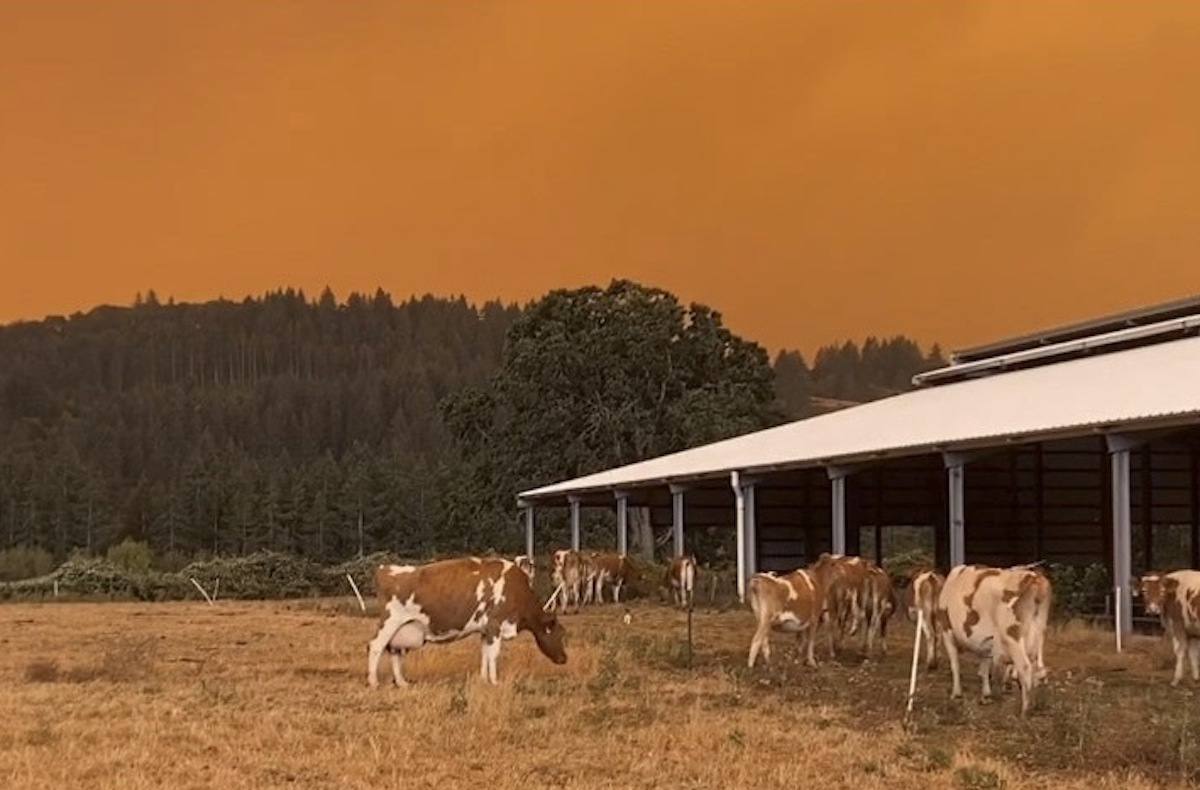
Courtesy of Darleen Sichley
Scientists in Idaho are finding that wildfire smoke dampens milk production and coincides with increased risk of disease and even death in dairy cows.
Six of Zach Rose’s cows at Rogue Creamery in southern Oregon came down with pneumonia shortly after a bad fire season in 2018, and he thinks the smoke was to blame. “You can see a lot of respiratory issues if they inhale a lot of smoke,” said Rose, the organic dairy’s manager. “We try to keep them indoors obviously as much as possible in those times of really smoky conditions.”
Pictured above: Still from a cell phone video shows Darleen Sichley’s Abiqua Acres Farm during the Beachie Creek Fire last September in Silverton, Oregon.
This story was originally published at High Country News (hcn.org) on August 16, 2021.”
Researchers and farmers are trying to figure out just how harmful wildfire smoke is to dairy cows’ health, and to their own bottom lines. “I bet it does affect milk production,” Rose said. “I’m sure that it certainly can‘t be helpful for it.” This summer, as the Western U.S. battles poor air quality and confronts a hotter, drier future of wildfires exacerbated by climate change, scientists from the University of Idaho are studying dairy cows in the Pacific Northwest to find out more.
Fine particles from wildfire smoke penetrate deep into human lungs, aggravating chronic heart and lung disease and even causing premature death. But smoke’s effects on livestock aren’t well understood, though animals with cardiovascular or respiratory disease are particularly sensitive.
“Humans have the option to move inside and use filtered air,” said Pedram Rezamand, a professor studying animal and veterinary science at the University of Idaho. But dairy cows — though they might spend a portion of their time inside “parlors” being milked — are mostly outdoors, either in a pasture or under open sheds. “We thought, if it’s impacting humans, there’s a good chance it’s impacting animal production and health,” Rezamand said.
“We thought, if it’s impacting humans, there’s a good chance it’s impacting animal production and health.”
Rezamand’s colleague, Amy Skibiel, who studies lactation physiology at the University of Idaho, is spearheading a project to investigate the links between wildfire smoke exposure and cattle health. The research team first collected five years of data on cow disease and deaths from two farms in Idaho and Washington, then looked for patterns that lined up with archived weather and air-quality data. They also recorded physiological measurements, like rectal temperatures and body weight, along with milk production stats, from 25 cows at the campus dairy farm over a three-month period that included a major weeklong smoke event.
Preliminary results show higher incidence of disease — especially mastitis, an udder infection — and increased risk of mortality among calves when wildfires elevated the level of fine particulate matter, or PM 2.5, in the air. Researchers also found changes in immune cells and signs of inflammation. “This raises more questions,” said Skibiel. The connection between inhaling wildfire smoke and irritated udders is intriguing, Skibiel said: “It’s certainly worth following up on.”
The researchers also documented a significant dip in milk production, averaging three pounds of milk, or just over a third of a gallon, per cow, per day. (Farmers measure milk in pounds rather than gallons.) “That’s a huge number for a small farm like us,” Rose said. Dairy cows in the U.S. produced an average of 65 pounds of milk per animal per day in 2020, and Western dairy farms produce 40% of the nation’s milk, with California and Idaho producing the first- and third-largest amount of milk of any state, respectively. Nationwide, the dairy industry generates $231 billion, according to industry group International Dairy Foods Association.
The researchers also documented a significant dip in milk production, averaging three pounds of milk, or just over a third of a gallon, per cow, per day.
But it’s not just wildfires that have dairy farmers concerned; hotter temperatures also reduce milk production. “We’re more worried about heat than smoke at this point,” said Marilyn Hedstrom, who has milked cows with her husband Bill in Montana’s Flathead Valley for 45 years. “We haven’t really noticed particularly a change of behavior or anything with ’em.” The University of Idaho scientists wanted to make sure their initial findings accounted for the impact of heat, too. Though temperatures were high both before and after the wildfires choked the sky, the changes they documented coincided with the smoke. Now, the research team is seeking additional funding to collaborate with a veterinarian at the University of Idaho to further separate the impacts of heat and smoke by conducting tests in climate-controlled rooms.
Darleen Sichley, the co-owner of a dairy farm in Silverton, Oregon, is eager to learn more about the results. Last September, as the Beachie Creek Fire raged within three miles of the Abiqua Acres, Mann’s Guernsey Dairy, Sichley wished she had more information on the risk that smoke poses to her cows. “I was looking for answers, and nobody really had anything,” she said. “You definitely do think in the back of your mind, what is this doing to their lungs?” Three weeks of heavy smoke prompted her to wear an N95 mask while working outdoors. That wasn’t an option for her cows, however. Instead, they got an extra dose of a preventative mineral supplement used during times of stress.

